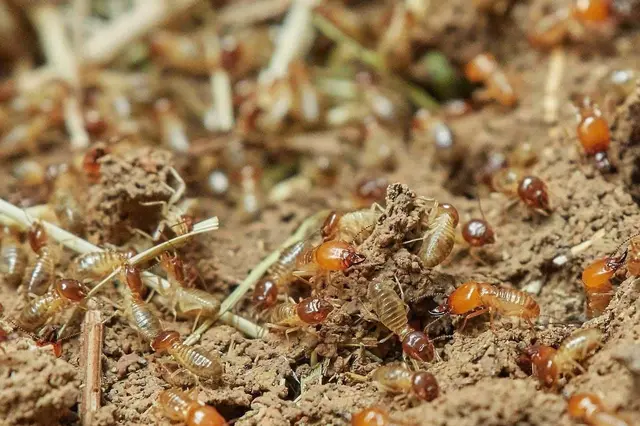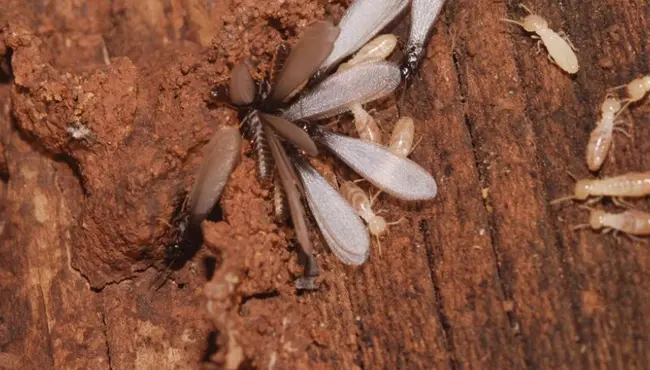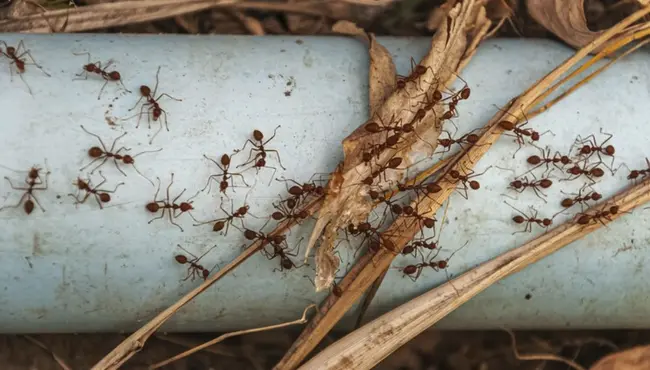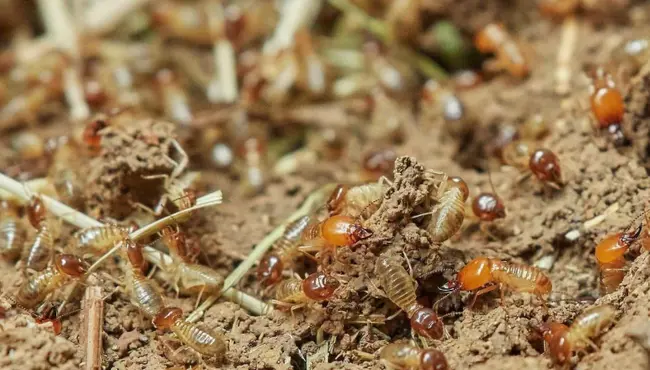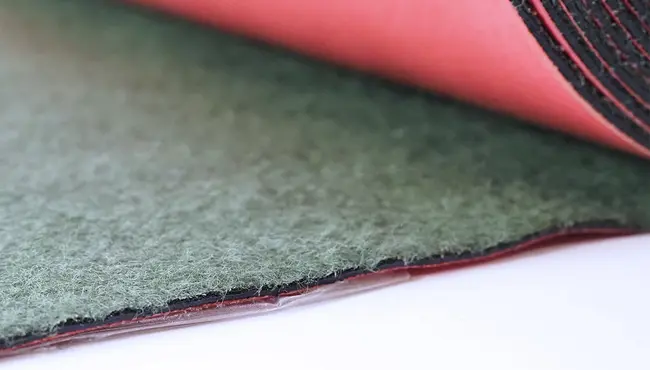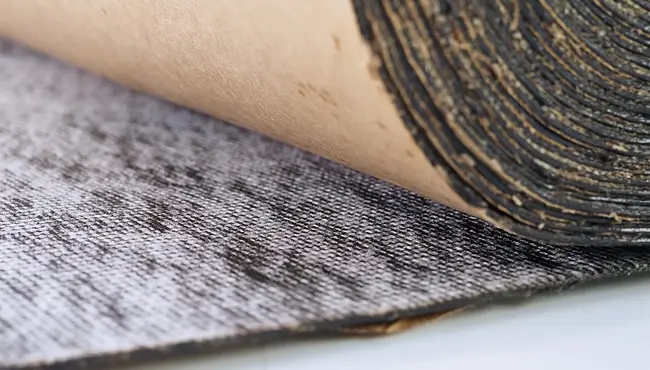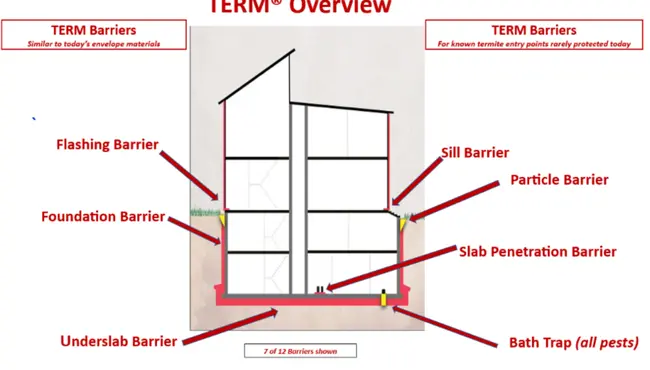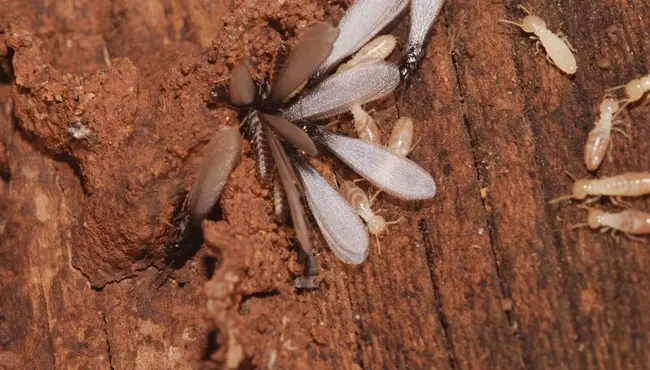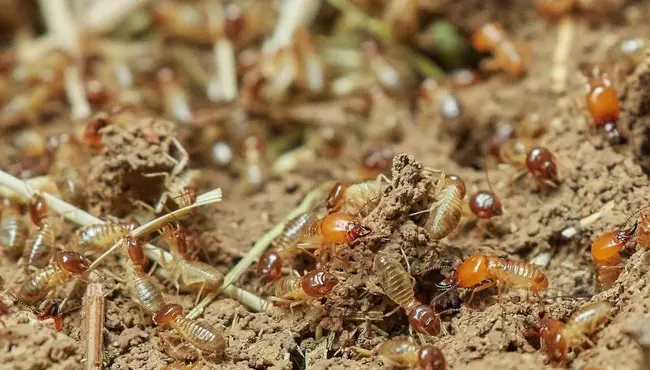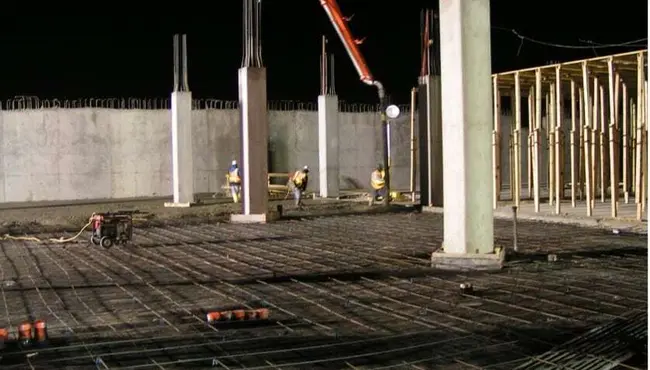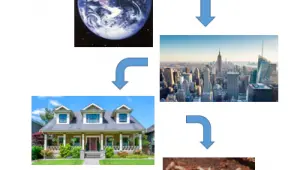Protecting below-grade insulated concrete form (ICF) walls (crawl space, slab, or basement) from termites requires an application of superior ICF waterproofing, like 650 TRM.
Termites can’t compromise the strength of a below-grade ICF wall, but they can burrow through, undetected by coverings of siding, wood, paint, stucco, etc. Eventually, the termites will make it up the structure’s walls, roof, and floors, reaching and damaging the untreated wood.

For the long-term integrity of all the building components in an ICF structure, its foundation needs protection against termites. Building codes often ban below-grade rigid foam without an approved protection method in heavily infested areas, like the southeast United States, California, and Hawaii.
Where Termites Live

Termites live almost everywhere, with subterranean termites causing about 95 percent of the damage. Subterranean termites live in soil to avoid extreme temperatures while maintaining access to vital moisture. They attack any source of cellulose within a foraging distance of their colony. They feed on or near the ground on wood, cardboard, paper, and fiberboard. The destructive and aggressive East Asian Formosan subterranean termite, which entered the U.S in the 1940s, can multiply and destroy wood structures faster than other native subterranean species.
Protecting an ICF Home from Termites

Protecting an ICF home from termites involves implementing both preventive maintenance and physical methods, like applying a termite-resistant waterproofing membrane.
Preventive Maintenance to Prevent Termites
Homeowners can take several preventive steps to prevent termites from infesting their property:
- Replace weather-stripping and loose mortar near and around windows and basement foundation.
- Minimize moisture in and around the house. Termites need water to thrive.
- Repair leaking water pipes, exterior AC units, and faucets.
- Drain the water away from the home with functional gutters, splash blocks, and downspouts.
- Inspect the foundation for mud tubes, uneven or bubbling paint, and hollow-sounding wood – all signs of termites.
- Monitor all exterior wood for any indication of change, including door frames and windows.
- Maintain an 18-inch gap between all wood portions of your house and the soil.
- Store firewood at least 20 feet from the home.
- Schedule annual professional termite inspections.
Physical Methods of Termite Protection
Common physical methods of termite control include partial protection with termite shields and collars and full-foundation physical barriers that create a termite-proof barrier under the building, like Polyguard TRM water and termite barriers.
Polyguard 650 TRM
Polyguard TRM 650 TRM provides an outstanding water and termite protection solution for ICF homes.
The Polyguard specializes in sustainable pest barriers without pesticides to protect against termites, moisture, and energy in a single building envelope solution. It effectively blocks termites and water when properly constructed as part of the building envelope, and allows for fast and straightforward application with just a few materials and tools.
The 650 TRM application for the foundation includes seven components:
- Peel and stick 650 TRM protects commercial and residential ICF and concrete foundations against water and termites. Globally used since 1970, 650 TRM, Polyguard foundation waterproofing membranes; NAHB’s Home Innovation Research Labs certified it as point-worthy for the National Green Building Standard™.
- Preformed corner boots for inside and outside corners
- Polyguard 650 WB Liquid Adhesive to enhance adhesion
- TRM Flashing provides waterproofing, energy sealing, and insect resistance.
- TRM Sealant prevents infiltration at slab penetrations.
- Polyflow 15P applies over the waterproofing membrane to direct moisture into the drain core. It can minimize hydrostatic pressure when connected to our high-capacity collector and outlet drainage system, Totalflow™.
Installing the Polyguard 650 TRM requires only a few tools: measuring tape, utility knife, hard wall roller, (2) lambs wool rollers, and a caulking gun.
Installing 650 TRM
1. Prep the ICF wall
- Check ICF foundation wall conditions and concrete footer
- Needs above freezing temperatures
- Remove debris
- Clean wall and concrete footer
- Seal any crack over ⅛-inch
2. Detailing
- Apply Polyguard 650 WB Liquid Adhesive to surfaces you plan to put the TRM Flashing or corner boots.
- Install corner boots
- Install TRM Flashing
- Flash projections with an extra ply of barrier
3. Prime the surface
- Apply Polyguard 650 WB Liquid Adhesive on all concrete and ICF wall surfaces, and allow to cure until tacky (20-30 minutes)
4. Install the barrier
- Pull the release liner at the top, and adhere to the ICF wall
- Overlap the side seams by 2-inches and then use the roller to seal the seams
- Install barrier over the footer
- When installing a Underslab TRM, make sure it ties 100 percent to the 650 TRM on the footer
5. Seal penetrations
- Apply Detail Sealant PW™ to all seams
6. Install drainboard
- Install Polyguard drain mat Polyflow 15P over the installed 650 TRM
- During installation, adhere to the drain mat with adhesive, like Polyguard 650 LT Liquid Adhesive, California Sealant or 650 WB Liquid Adhesive
Why ICF Walls Need Polyguard 650 TRM
650 TRM is an excellent solution to blocking termites in below-grade walls. Since 1999, entomology scientists and Polyguard have collaborated to create a non-pesticide, waterproofing/termite physical barrier. Our products prevent termites from entering a house through a foundation, along with bath traps, slab penetrations, joints, or cracks or joints in the floor, spaces where concrete slab intersects with exterior sheathing, across the horizontal floor surface, and cold joints.
Don’t hesitate to contact Polyguard® today for more on how to protect ICF homes against termites.
